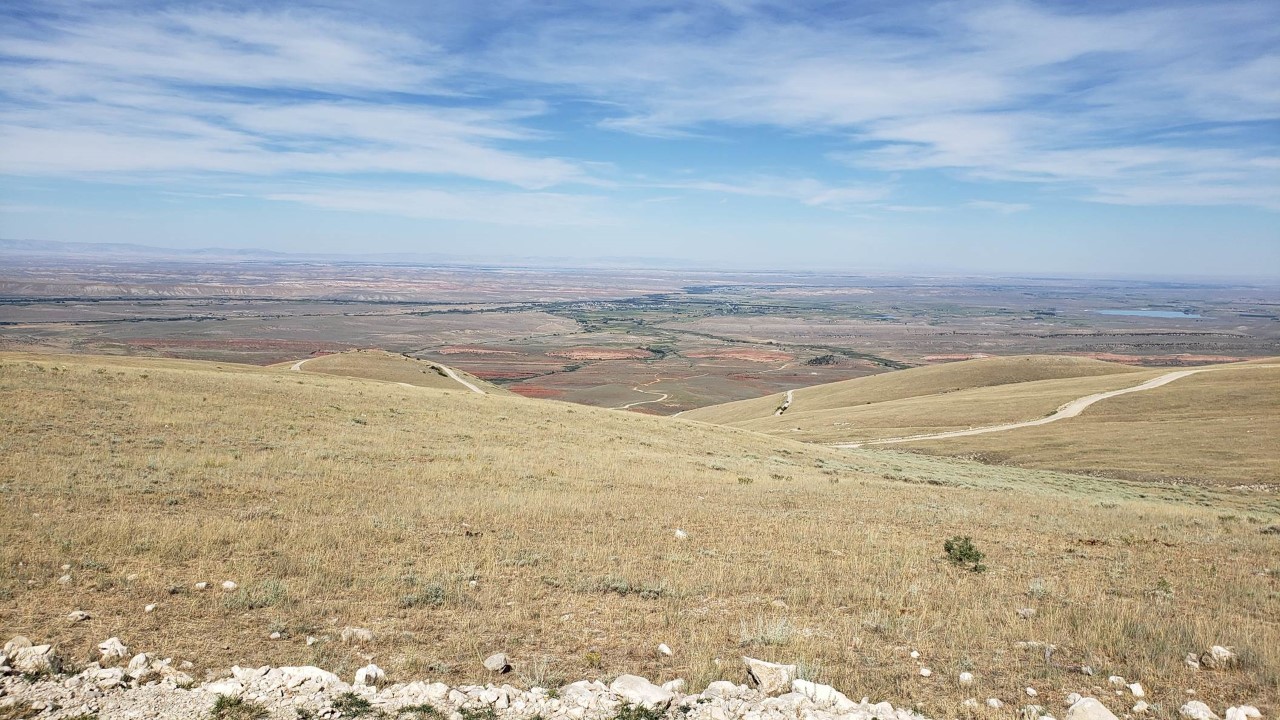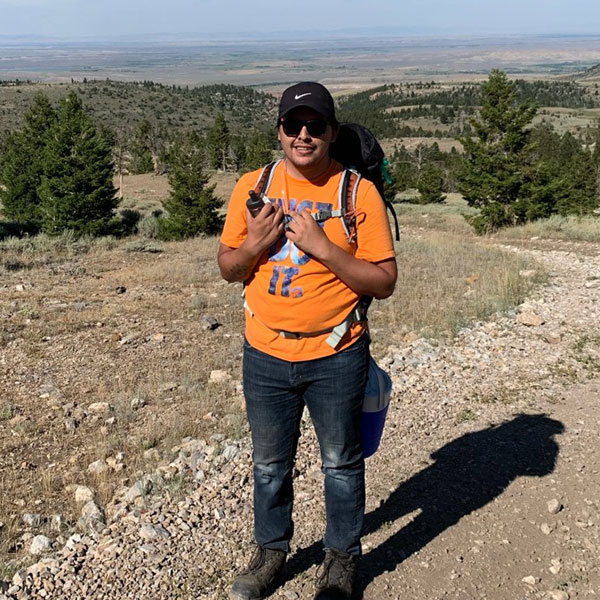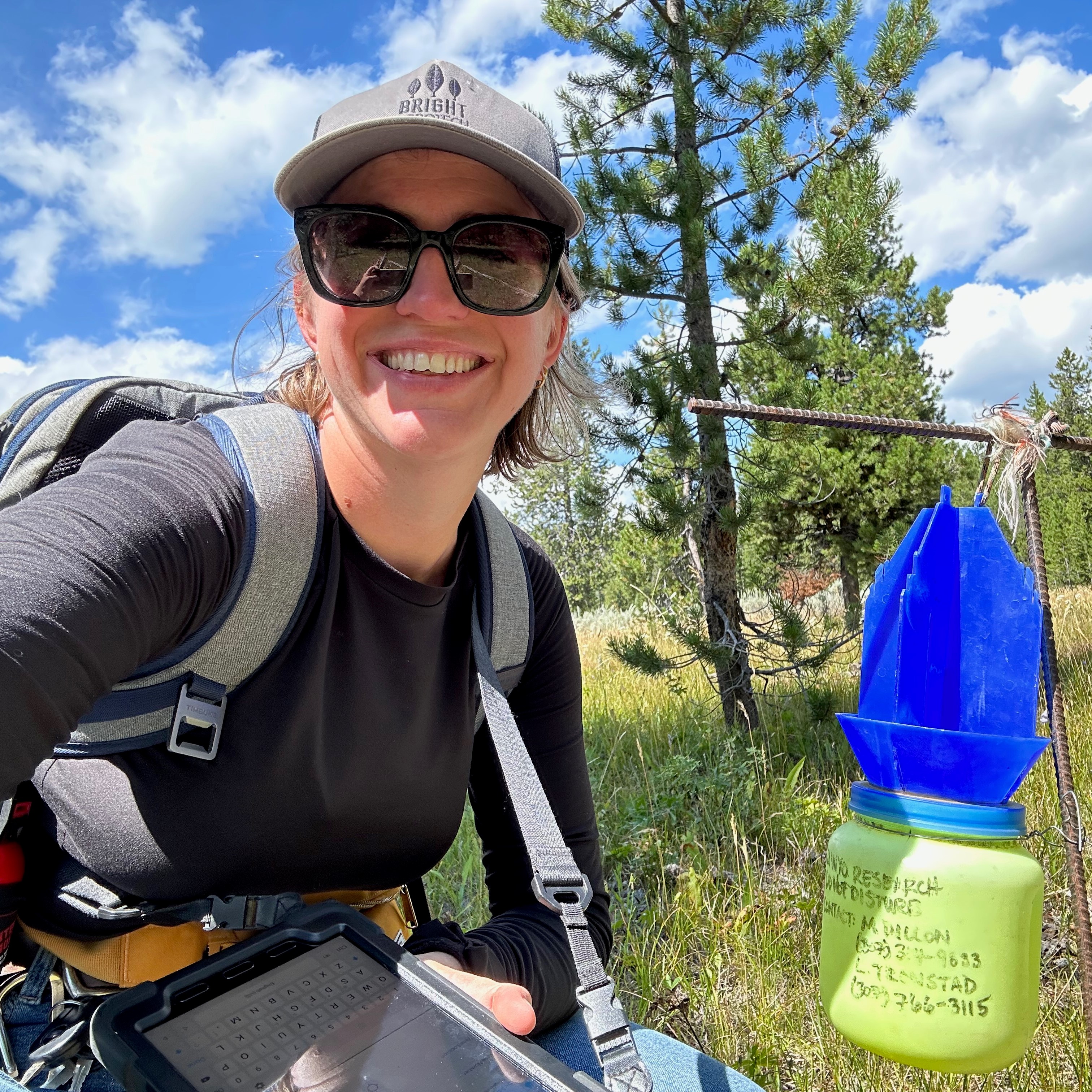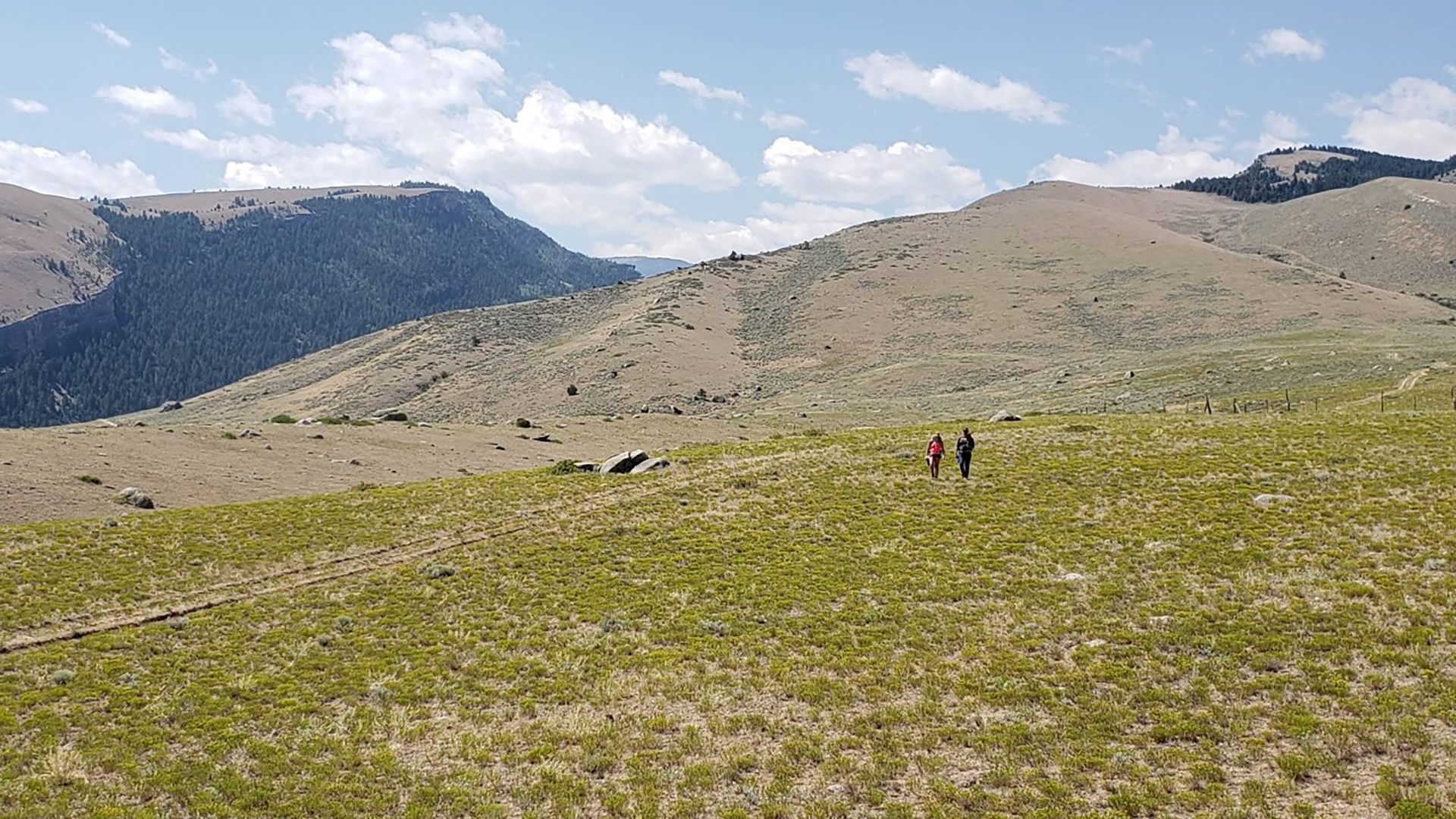Albert Mason - Evaluating How Mule Deer Fawns Learn to Migrate on the Wind River Indian Reservation.
Albert Mason
The Richard Baldes Native American Excellence Fund in Biodiversity Conservation Awardee
Zoology and Physiology
Graduate Advisor: Matt Kauffman

Background:
Migration is common in animals because it allows them to move between different seasonal ranges to meet their year-round foraging requirements (Kauffman et al., 2021). Migration in Wyoming is prominent because many ungulate taxa must migrate across Wyoming’s landscape to escape the harsh winters and short summers to find sufficient resources. Moose (Alces alces), elk (Cervus canadensis), bighorn sheep (Ovis canadensis), pronghorn antelope (Antilocapra americana), mule deer (Odocoileus hemionus) all migrate across the state in diverse ways. We have learned so much from studying migration across taxa that we identified mechanisms about why ungulates migrate during different seasons. For example, movement studies support the Green Wave Hypothesis (Aikens et al., 2017), which describes how migrating ungulates follow plant growth that occurs in the spring and moves as a wave across the landscape. In the early winter, ungulates are thought to migrate ahead of the coming snow to avoid moving through snow that would deplete energy resources (Monteith et al., 2011, Rodgers et al., 2021) . The Frost Wave has only been applied to avian migrants but is referred to as the phenomenon of migration that is in response to snow and cold temperatures that also traverse the landscape as a wave (Xu and Si 2019).
Despite this progress to understand migration ecology, migration has often eluded scientists. Most tracking data comes from adult migrants, while movement data from younger animals is limited. Migration knowledge is thought to transcend generations by younger individuals learning where and when to migrate from their parents or other conspecifics (Nelson 1998). Jesmer et al. (2018) has shown that after a period of extinction from an area, reintroduced bighorn sheep and moose failed to migrate in the first generation because they lacked cultural knowledge of their new habitat (Jesmer et al., 2018). But after multiple generations populations learned the landscape and the timing of the green wave and through social learning gained the ability to migrate once again. Although social learning is assumed to be the mechanism, how learning happens has been little studied. For example, in White-tailed deer (Odocoileus virginianus), Nelson (1998) showed that the white tailed deer teach their offspring to migrate by having them accompany them along their migration route (Nelson 1998). When their offspring get older, they occupy the same migration route as their mothers, showing evidence of social learning where young learn from their mothers. These cases are important because the animals studied showed evidence of learning from their mothers and others by watching them how to migrate. This contrasts teaching it would imply that the mothers would have to show the fawns hot to migrate. Byholm et al, 2022 found that migration knowledge in Caspian terns (Hydroprogne caspia) was transmitted by the fathers who accompanied the young terns to their wintering range for their first migration. This shows evidence of the parents teaching their young how to migrate thus teaching migrational ability to the younger generation which is the basis for the Social Learning Hypothesis. The Social Learning Hypothesis is the mechanism by which organisms are taught how to migrate by watching and accompanying their parents with them during their migration seasons. Jakopak et al. (2019) showed that mule deer have the ability to omit their parent migration route after learning that route and could complete an entirely different migration after the abandonment of the animal by their mother (Jakopak et al., 2019). In this study, a female fawn migrated away from their parental home range and back to complete a full season of migration while having no prior knowledge of the landscape before migrating. This shows the importance of spatial memory as a key mechanism that underpins all types of migration learning. While previous studies have shown that the ability to migrate in ungulates must be learned (Jesmer et al. 2018), there is no context where the ability to migrate is innate thus showing that social learning or being taught by parents is not studied enough to be the predictor of how ungulates and animals learn how to migrate showing the gap in the current knowledge of how migration transcends generations.
Hypotheses:
In this study, I will evaluate the Social Learning Hypothesis (SLH) which articulates that young animals learn from following and adopting their mothers routes as they become adults. This study will evaluate the migration patterns of mule deer fawns and mothers on the Wind River Indian Reservation by collaring 9 month old fawns and collecting movement data from the early years of the fawn's life into adulthood (i.e. 2+ years of age). This would allow us to test the prediction of the SLH that fawns learn from and adopt the migration outs of their mothers. Alternatively, we will evaluate how the individual experience of fawns in their first 2 years of life shapes their migration routes. During their first and second spring migration, I will evaluate if young mule deer follow routes that allow them to access the more nutritious plant forage during green-up (i.e. the Green Wave Hypothesis). During the second and third fall migrations, I will evaluate if avoidance of snow accumulation alters their migration path (i.e. Frost Wave Hypothesis).
Share This Page


Research Highlights





